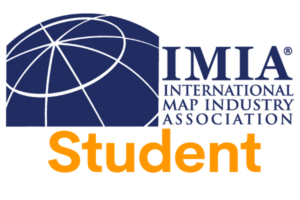IMIA Members

Patrick Kaltenbacher
In the fall of 2022, I decided to make a change. I had been working as a Data Integrity Specialist in the ticketing industry for four and a half years, and, while I loved the data analysis aspect of my career, the industry felt hollow and unfulfilling. While looking for a way to combine my data skills with my passion for the outdoors, I stumbled upon the field of GIS. Less than a year later I began a master’s program at the University of Colorado – Denver in Applied Geography and Geospatial Science. About a year after that, thanks to Ariel Doumbouya’s generous student sponsorship, I attended the 2024 IMIA Mapping Leaders Forum in Denver. I wasn’t sure what to expect at this event, but what I found was an impassioned and inspiring group of professionals that quickly energized my career and confirmed my suspicion that I was on the right track. In September of 2024, I became the IMIA’s first student member and was recently offered a chance to share my experiences with this incredible network.
Through my master’s program at CU Denver, I’ve had the opportunity to design and execute a variety of complex and rewarding projects. One of my favorites was my final project for my cartography course—a six-map atlas featuring custom 3D visualizations of some of my most memorable hikes and backpacking trips from the past few years. Covering trails in Colorado, Wyoming, and Alaska, this project required the combination of trail, land cover, water body, and DEM data from different state and federal sources. I toiled over color palette themes, integrated some of my best images from my landscape photography hobby, and created something that I was able to gift to friends that accompanied me on these journeys. You can view this atlas and many more course projects on my portfolio website.
Shortly after the 2024 IMIA Mapping Leaders Forum I began working for the USGS as a GIS and Geology Research Assistant with a goal of mapping eolian sediment across the United States. I began the project by amalgamating state and federal government data showing existing eolian sand and using Python to clean and format the data according to USGS best practices. Now, I’m writing a lengthy Python script using that data to test multiple classification algorithms to predict eolian locations based on raster soil data and DEM derivatives. In the coming months, I plan on publishing a dataset and map that visualizes the output of this model. This has been a daunting task that has rapidly escalated my understanding of Python and simultaneously strengthened my geospatial analysis skills.
With graduation quickly approaching in May and my contract with USGS winding down, I’m already deep in the process of applying and interviewing for full-time positions. I’m predominantly interested in GIS Analyst and Cartographer positions in the Pacific Northwest, Colorado, and the United Kingdom. However, I’m open to any position involving engaging geospatial analysis and cartographic design. I’d be thrilled to work with any organizations in the IMIA network, and I’d be incredibly grateful to connect and learn from other GIS and
cartography professionals. My portfolio site contains my contact information. Please feel free to connect with me on LinkedIn or reach out for any reason.
Contact Information
| First Name | Patrick |
| Last Name | Kaltenbacher |
| Phone Number | 9185040597 |
| [email protected] | |
| Address | |
| Website | https://pjkaltenbacher.wixsite.com/gis-portfolio |
